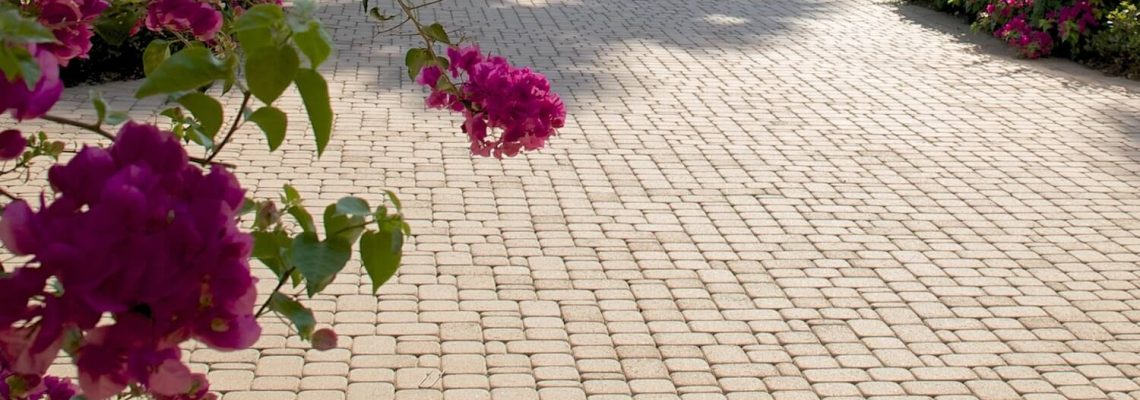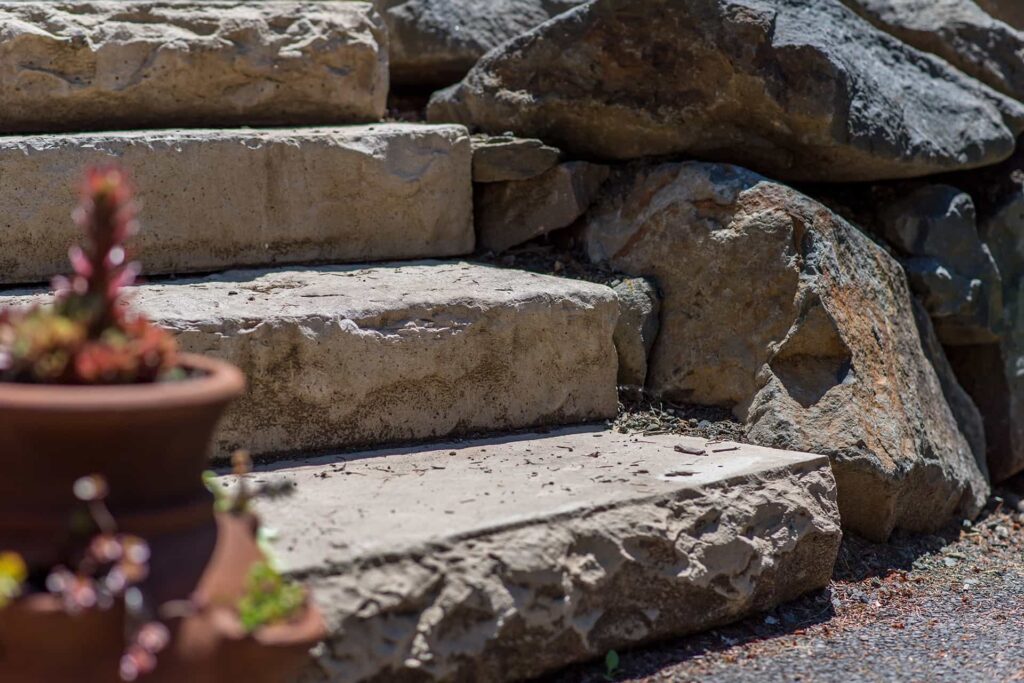Living in Oregon means embracing a landscape of contrasts. From the wet and misty coasts to the dry, sunbaked high deserts, this state offers a stunning variety of scenery—and a similarly wide range of weather. Homeowners know that if you want your outdoor spaces to last, your materials must be built to handle just about everything Mother Nature throws their way.
That’s why paver hardscapes have become a go-to solution for patios, driveways, walkways, and more. But it’s not just the materials that matter—professional paver installation plays a vital role in making sure those pavers can truly stand up to the elements.
In this article, we’ll explore how paver hardscapes are uniquely designed to survive Oregon’s rain, heat, and snow—and why trusting an expert to install them makes all the difference.
Why Pavers Outperform Traditional Hardscaping Materials
Unlike poured concrete or asphalt, pavers are individual units—made from stone, brick, or concrete—installed on a prepared base and locked together with joint sand. Their modular nature makes them naturally adaptable to climate changes and ground movement, offering distinct advantages for homeowners dealing with Oregon’s diverse and often extreme weather.
Flexibility in Pavers and Durability
Because each paver unit is independent, the overall surface can flex with soil expansion and contraction. This means fewer cracks and a longer lifespan, especially when compared to materials like poured concrete that are more vulnerable to weather-induced cracking.
Built-In Drainage Benefits
Paver systems are designed to allow water to flow through the joints and into the ground below—helping reduce standing water, prevent erosion, and protect your foundation. This feature is particularly crucial in Oregon, where some regions see upwards of 40 inches of annual rainfall.
Aesthetic Longevity
Besides functionality, pavers offer timeless beauty. They come in a range of textures, shapes, and colors, many of which mimic the natural stone features found in Oregon’s landscapes. When installed correctly, their visual appeal holds up for decades—even with exposure to the state’s shifting weather patterns.
How Paver Hardscapes Handle Oregon’s Persistent Rainfall
Ask any Oregonian what defines the state’s weather, and chances are they’ll say rain. From the Willamette Valley to the lush forests of the Coast Range, precipitation is a near-constant companion for much of the year. While this nurtures Oregon’s green beauty, it poses serious challenges for outdoor surfaces.
Designed for Drainage and Runoff Control
Poor drainage is one of the top reasons outdoor surfaces fail in wet climates. Water that pools can freeze, creating cracks, or it can seep below the surface, destabilizing the foundation. A professionally installed paver system addresses this from the ground up.
Proper Base Construction: The installation process begins with excavation and the creation of a compacted gravel base, usually made from angular rock that promotes drainage. This base ensures water doesn’t collect under the pavers, which helps prevent shifting and settling over time.
Grading for Flow: Installers will grade the surface to subtly direct water away from the home and toward appropriate drainage zones. This keeps both your home’s foundation and your hardscape safe from long-term water damage.
Joint Sand Sealing: High-quality joint sand, often polymeric, is brushed into the gaps between the pavers. This prevents weed growth, deters insect intrusion, and allows just enough water infiltration to prevent runoff while protecting the sub-base.
Resistance to Slippery Conditions and Mold
Rain doesn’t just damage materials—it creates slippery, unsafe surfaces. In Oregon’s mild, damp winters and moss-prone regions like Eugene or Tillamook, safety becomes a top concern.
Professional installers recommend and use paver options with textured finishes or anti-slip surfaces to provide better traction when wet. With regular maintenance and expert sealing, your patio or walkway remains safe and usable, even during the soggiest seasons.
Hot Summers and High UV: Pavers Take the Heat
While Oregon may be best known for its rain, summer temperatures—especially in areas like Bend, Medford, or Hermiston—can climb into the 90s or above. Hot, dry conditions test the resilience of any hardscape, but pavers are built to endure.
UV and Color Resistance
High-quality pavers are manufactured to resist fading caused by intense sun exposure. But to ensure that UV resistance lasts, professional sealing is often applied after installation. A professional installer knows which sealants will maintain color richness and surface durability without making the pavers slick or unnatural-looking.
Cooler to the Touch and Safer in Heat
Some paver materials—particularly light-colored or natural stone varieties—remain cooler than poured concrete in direct sunlight. That’s especially important for areas near pools, play zones, or pet runs.
An experienced installer can help you choose pavers that reflect more sunlight and retain less heat, creating a safer and more comfortable space during hot summer days. They’ll also ensure proper joint spacing and ventilation so the surface stays stable and breathable in extreme temperatures.
Managing Thermal Expansion
Concrete can expand and crack when exposed to intense heat over time. Because pavers are individual units, they accommodate expansion and contraction far better than a monolithic slab.
Professional installation ensures the base is flexible yet compacted enough to absorb this movement, while edge restraints keep the pavers in place. It’s a precise science—something DIY efforts rarely get right.
Snow, Ice, and Freeze-Thaw Cycles: The Winter Test
Though many parts of Oregon have milder winters, areas east of the Cascades and at higher elevations regularly see snow and sub-freezing temperatures. Freeze-thaw cycles can devastate poorly built surfaces—but not pavers installed by a pro.
Absorbing Ground Movement
Water that seeps into porous materials or under surfaces can freeze and expand, creating cracks or upheaval. Paver systems are designed to “float” on a flexible base that absorbs this movement, preventing the surface from fracturing.
Professional compacting and layering of the base ensures it remains stable during these cycles. Additionally, edge restraints keep everything locked together so no gaps or raised edges develop due to frost heave.
Safer, More Practical Snow Management
Snow removal is another critical factor. With pavers, you don’t have to worry about damaging the surface with shovels or blowers. Their flat, durable construction makes snow removal easy and safe.
Professionals may also recommend surface textures that improve traction during snowy or icy conditions. This makes a huge difference for walkways and driveways where safety is essential.
The Professional Difference: Why Expert Installation Matters
Pavers themselves are excellent materials, but their performance is only as good as their installation. Choosing to work with a seasoned professional—especially one familiar with Oregon’s diverse terrain and climate—transforms your hardscape from basic to bulletproof.
Tailored to Local Conditions
A professional knows how to handle the unique challenges of Oregon’s many microclimates:
- In coastal zones, they consider high moisture and salt content in the air.
- In the valleys, they account for heavy clay soils and prolonged rainy seasons.
- In high desert regions, they build for intense sun, low moisture, and freeze cycles.
This local knowledge ensures your project doesn’t just look good on day one—it lasts for decades.
Precision Base Preparation
It’s easy to overlook what goes under the pavers, but that’s where longevity begins. Professionals excavate to the correct depth, grade the surface precisely, and compact the base in multiple layers using specialized equipment.
Even a small mistake at this stage—like skipping compaction or miscalculating slope—can lead to major issues down the road. A pro guarantees it’s done right the first time.
Long-Term Integrity and Warranty Protection
Reputable installers often provide warranties on both materials and workmanship. That peace of mind is something DIY or budget installs can’t offer. Plus, many paver manufacturers require professional installation to uphold their product warranties.
Low-Maintenance by Design, Even in Oregon
Once your paver hardscape is installed, it doesn’t demand much—but a little seasonal upkeep will help it continue looking and performing its best.
- Fall: Remove leaves and organic debris to prevent stains and mold. A leaf blower or stiff broom usually does the trick.
- Winter: Use plastic snow shovels or a snow blower. Avoid salt-based deicers; opt for alternatives like sand or calcium magnesium acetate.
- Spring: Power wash the surface to remove grime, check joints for sand loss, and reapply polymeric sand if needed.
- Summer: Reseal as needed (every 3–5 years) to protect from UV damage and enhance color retention. A pro can evaluate whether sealing is necessary based on your specific climate.
Many Oregon-based hardscape professionals offer maintenance services or annual inspections—perfect for ensuring long-term value and beauty.
Conclusion: Strength in Every Season
Whether you’re bracing for heavy winter rains in Corvallis, battling dry summers in Prineville, or navigating snowy winters in La Grande, your outdoor hardscapes need to be as resilient as you are.
Paver systems, especially when installed by a hardscape professional, offer a beautiful, durable, and low-maintenance solution that thrives in Oregon’s variable climate. With proper grading, drainage, materials, and craftsmanship, your hardscape won’t just survive the elements—it will stand as a permanent fixture of your home’s landscape.
So when the next storm rolls in—or the sun beats down—you’ll know your pavers are up to the challenge. Rain, heat, or snow—they’re built to endure it all.


